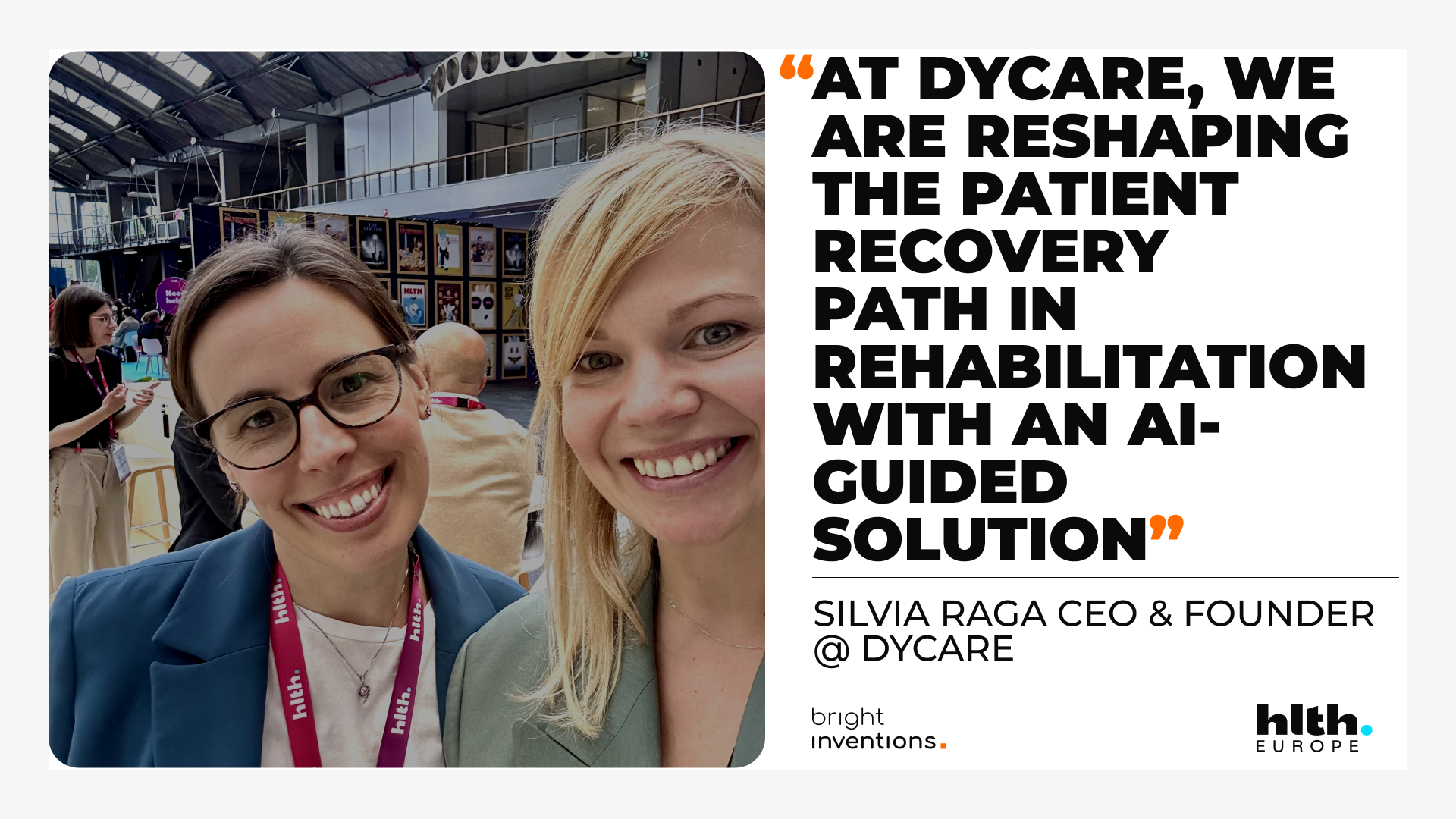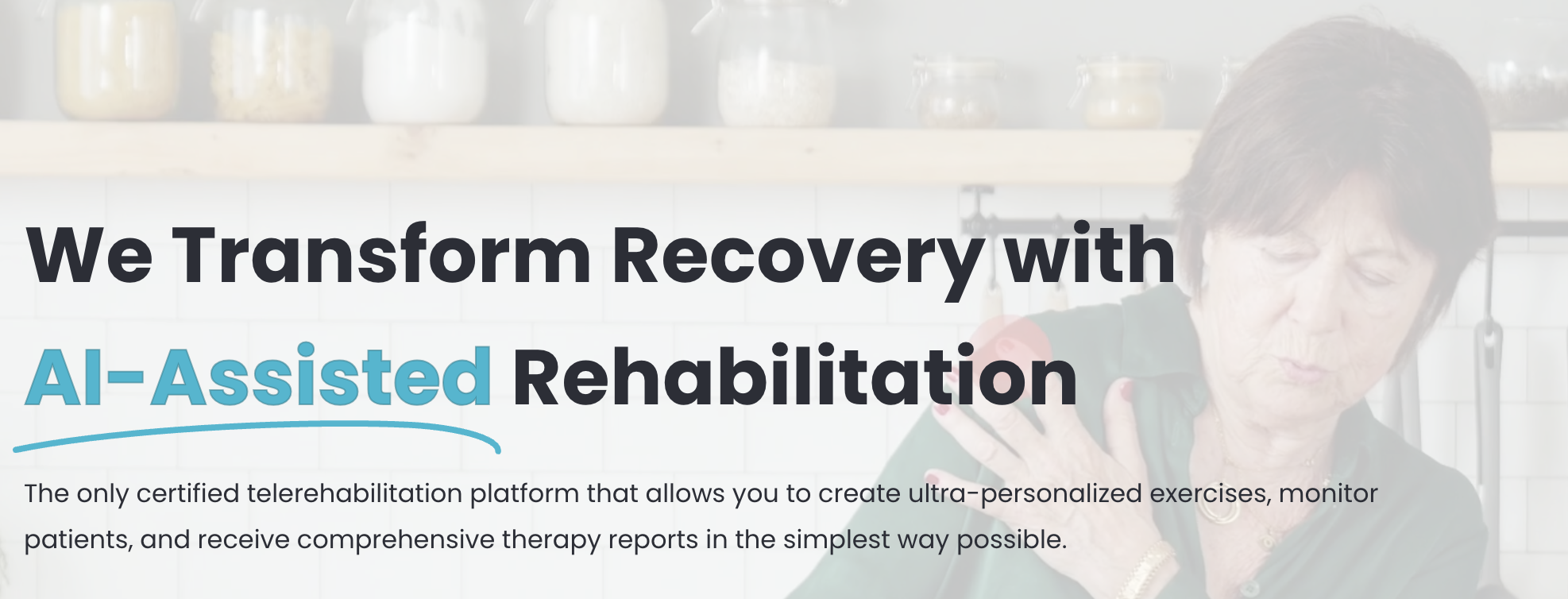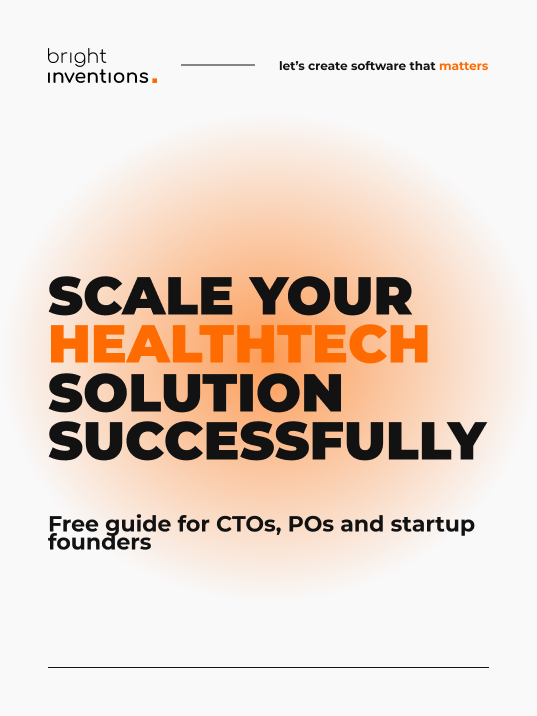Revolutionizing Patient Rehabilitation: An AI-Powered Path to Recovery
How is an innovative AI-driven solution revolutionizing patient rehabilitation by making it more accessible, efficient, and personalized? In this interview, Silvia Raga the CEO of DyCare shares insights into their groundbreaking digital rehabilitation platform, its impact on healthcare, and the challenges of bringing AI-powered solutions to market.
Could you briefly introduce yourself and describe your solution?
At DyCare, we are reshaping the patient recovery path in rehabilitation with an AI-guided solution. We have developed Rehab, a digital rehabilitation platform for hospitals, insurance companies, and rehabilitation centers that delivers effective and personalized home rehabilitation. With our technology, professionals can design and prescribe personalized exercises using advanced monitoring tools. We utilize computer vision technology and artificial intelligence algorithms to ensure patients perform exercises correctly, monitoring their range of motion, speed, and other parameters to guarantee safety and effectiveness.

Do you use Bluetooth devices?
No, we only require the activation of the camera on a smartphone, PC, or tablet, combined with artificial intelligence.
Is it a mobile app or a web app?
It’s a web app.
How will it change people's lives?
With our solution, patients can perform safe rehabilitation anytime, anywhere, whenever they want, always supported by a professional. Professionals can remotely track patient progress, adjust routines, and monitor recovery in real time. This leads to better therapeutic outcomes, reduced recovery time, and added convenience for patients.
Is it more accessible to people? Is it cheaper than visiting a clinic?
Yes, it is more accessible and can be cheaper. The payer depends on the model. We work primarily with the public sector in Spain and, in some cases, with insurance companies.
Is it also a solution for individuals? Can I download the app from the app store?
Currently, no. Each time it’s used, a professional physiotherapist must assess the patient and set up their exercise program.
Are you just in the Spanish market currently?
We are present in Spain, Italy, and South America.
Are you planning to expand into other markets in Europe or the US?
Yes, we are analyzing these markets. After expanding in South America, we plan to enter the US market.
What are the top technical challenges your company has faced?
The primary challenge is ensuring clinical validation, as our technology is classified as a medical device. This is crucial to what we do.
What value does AI provide for your users?
AI, combined with computer vision, enables real-time feedback for patients. We refer to this as real-time intelligent detection of movement. AI solutions allow us to track progress and provide professionals with alerts and indicators to better manage patient care.

source: https://www.dycare.com/en
What inspired you to develop this solution?
It stemmed from a personal experience. Following an ankle injury, I attended 10 physiotherapy sessions but saw little improvement. When I asked the physiotherapist why, there was no objective data to measure my progress. This lack of data inspired me and my co-founder to create a solution to fill that gap.
What trends do you see in health tech, apart from AI?
AI is a key trend, but adoption is the next critical step. Lowering barriers to introducing these solutions is essential for achieving cost savings, increased productivity, and efficiency.
What advice would you give to startups or scale-ups entering the Spanish market?
The Spanish market can be complex, with a strong emphasis on pilot studies. My advice is to ensure these are paid pilot studies, even if the amount is small. This demonstrates commitment and value, helping you move toward a contract after proving the results.
want to know more about AI in healthtech?

Are you planning to enter the Polish market?
It’s not currently a priority, but it’s an interesting market. We’ve received positive feedback from Poland, where many people seek therapy. While there are similar solutions, they tend to focus on fitness rather than medical care.
